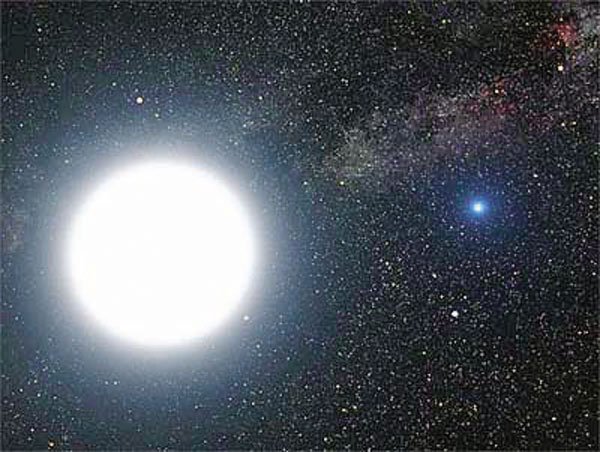Jan. 17: Moon At Apogee
The Moon is farthest from Earth for its current orbit today. It
is several thousand miles farther than average, but that’s not
enough for our eyes to detect a difference in its apparent size.
The Moon’s orbit is elliptical, so its distance varies by almost
30,000 miles.
By The University of Texas McDonald Observatory Online
Jan. 17: Moon At Apogee
The Moon is farthest from Earth for its current orbit today. It is several thousand miles farther than average, but that’s not enough for our eyes to detect a difference in its apparent size. The Moon’s orbit is elliptical, so its distance varies by almost 30,000 miles.
Jan. 18: Evening Sights
The constellation Orion floats high in the south late this evening, not far from Sirius, the brightest star in the night sky. The Milky Way arches across the dome of the sky, while an astronomical zoo stretches from Leo, the lion, in the east to Pisces, the fish, in the west.
Jan. 19: Desert Calendar
The brightest star in the night sky is Sirius, the “dog star.” It climbs into view in the southeast by around nightfall and scoots across the south during the night. In ancient Egypt, the star represented Isis, the wife of Osiris, the god of the underworld.
Jan. 20: Moon and Spica
The star Spica, in the constellation Virgo, follows the Moon across the sky tonight. It is a little below the Moon as they rise around midnight. Spica and the Moon stand even closer together at first light.
Jan. 21: Sirius and Canopus
The two brightest stars in the night sky line up in the south this evening, but only if you are south of about Birmingham or Los Angeles. Look well up in the south around 10pm for Sirius, the brightest star in the night sky. The second-brightest star, Canopus, is well below Sirius and a bit to its right.
Jan. 22: Moon and Jupiter
The Moon and the planet Jupiter stage a nice display in the southern sky before sunrise tomorrow. They climb into view in the southeast by around 2:30am Jupiter looks like a brilliant star to the left of the Moon. They will stand due south by first light.
Jan. 23: Columba
Columba, the dove, is the smallest of the nine birds in the celestial sky. To see it, first find Sirius, the brightest star in the night sky. It rises in the southeast just after sunset. Columba is a small pattern of faint stars to the southwest of Sirius.













